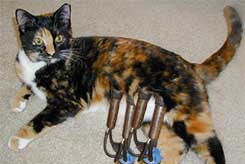"Only a genius can write a scientific book that throbs with life and is still scientific. Read Fabre's descriptions of insect life, those fascinating stories from which one has to tear one's self away, and compare the description of the same insect in a text book of biology - one is a living story of living creatures, the other a lifeless account of dead, dissected things." D. Avery, Parents Review, vol. 31. no. 9 edited by Charlotte Mason
Indeed, Jean Henri Fabre, son of semi-literate peasant farmers in France, became famous throughout the world for his scientific observations of insects and spiders.
We are living some hundred years since his death and there are scientists today who are thinking his observations are outdated and unscientific. They have gone so far as to launch a three year study on the supposed myth, "perpetuated" by Fabre on the tale that the female mantis eats the male after mating. Peterson's First Guides: Insects had the nerve to state this as early as 1987 in their publications saying: "contrary to popular belief, recent research suggests that the female does not eat the male while mating."
Fabre, in his own words, writes but one sentence in his book Insects: "Indeed, she even makes a habit of devouring her mate, whom she seizes by the neck and then swallows by little mouthfuls, leaving only the wings." Why did the science community take his word for it? Why did they not question nor study the mantis for themselves to prove it true or not? I think it is because anytime anyone went to look more closely at the fly, or spider, or any other creature after reading his work they realized Fabre had described just what they were seeing. If they didn't actually see something he described they confidently took his word for it. Everyone accepted Fabre's observations as scientific truth, even Louis Pasteur visited him because Fabre "already had a reputation as an expert on insect life".
This video, by New Atlantis, is the result of years of research following mantises through their life cycle again and again. Be sure to watch through past the credits to the postscript.
At l'HaRMaS, we had a few live praying mantises for display, one of which we named Hildegard. Megan Hoyt introduced us to Hildegard, "a twelfth century polymath who wrote books, music, created art, and was a Benedictine abbess and mystic". The beginning of this documentary reminded me of an "praying" abbess...
Fabre was a scientist. He spent hours each day, most days each week for months and years. He recorded his observations in minute detail and shared his passion in marvelously descriptive and fascinating books. Fabre was right and what he recorded was true.












